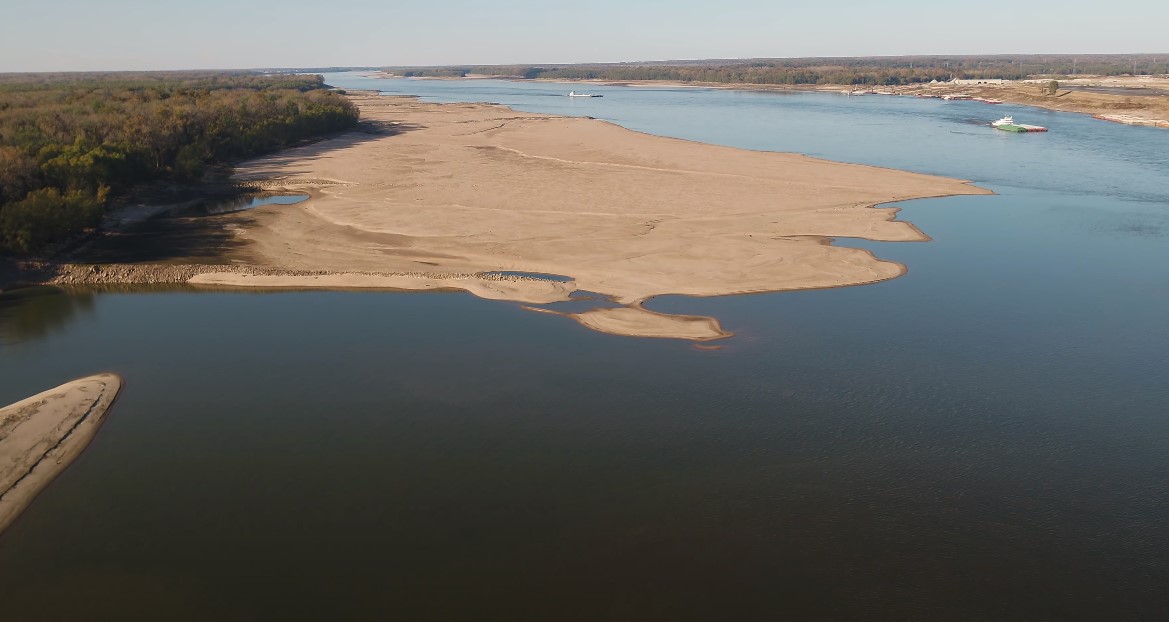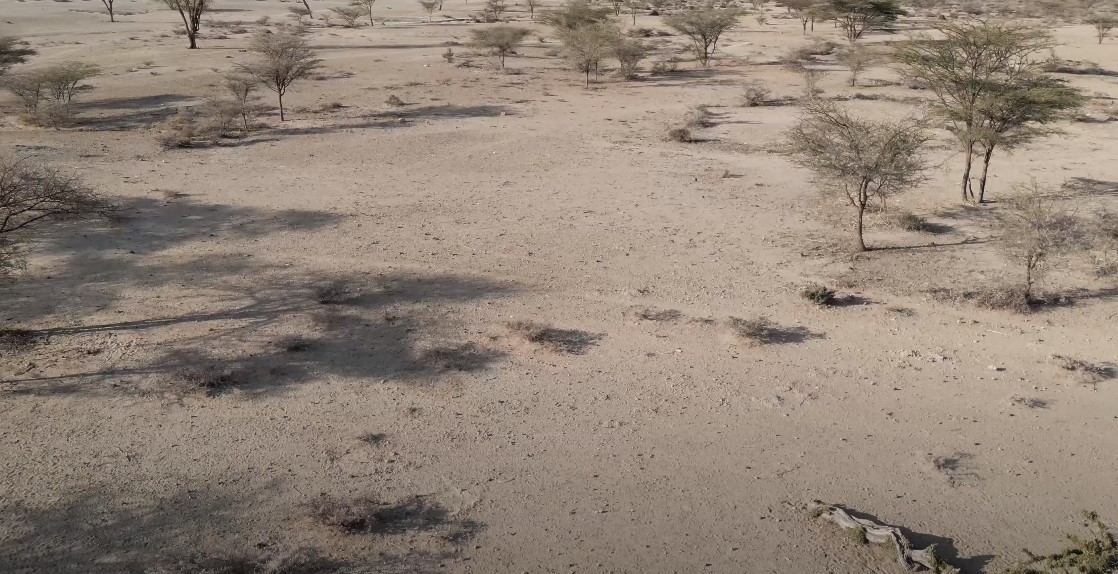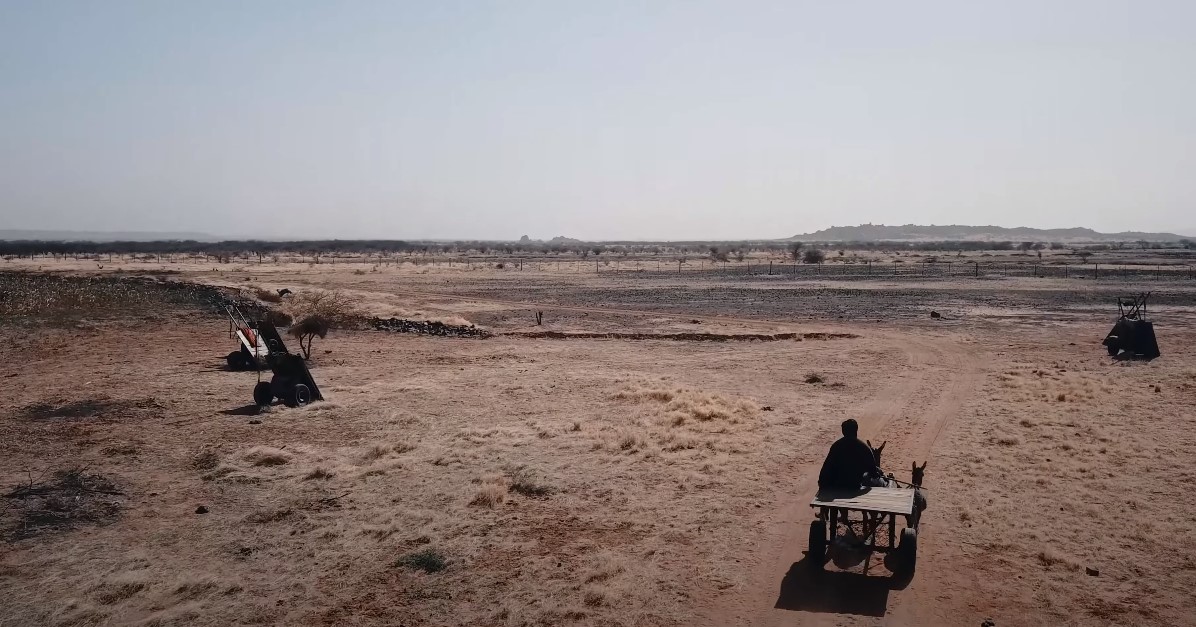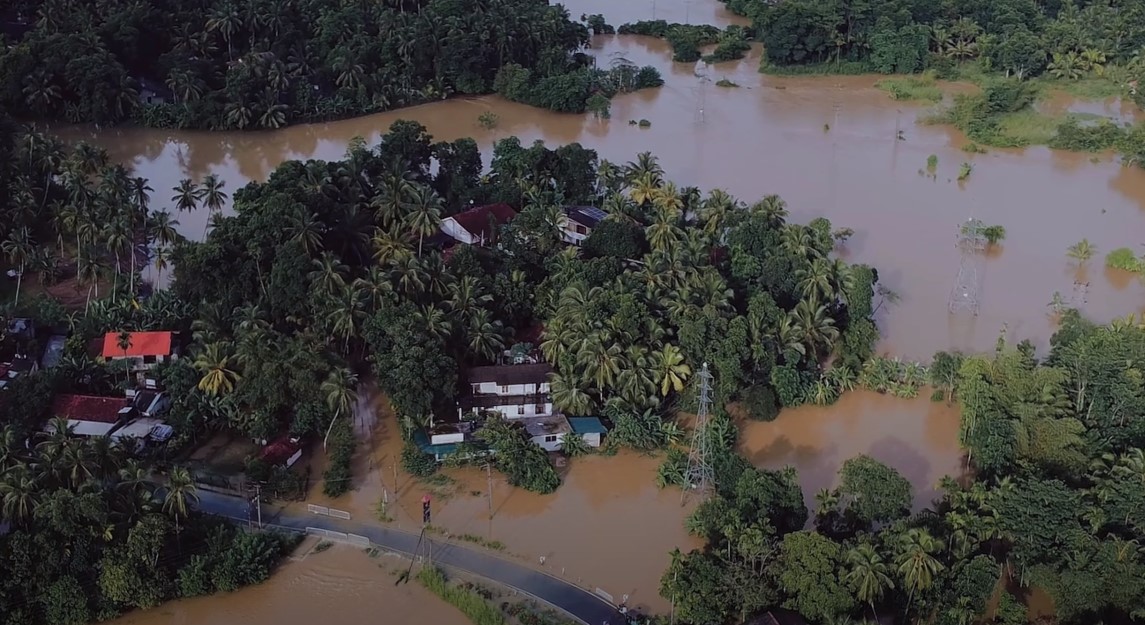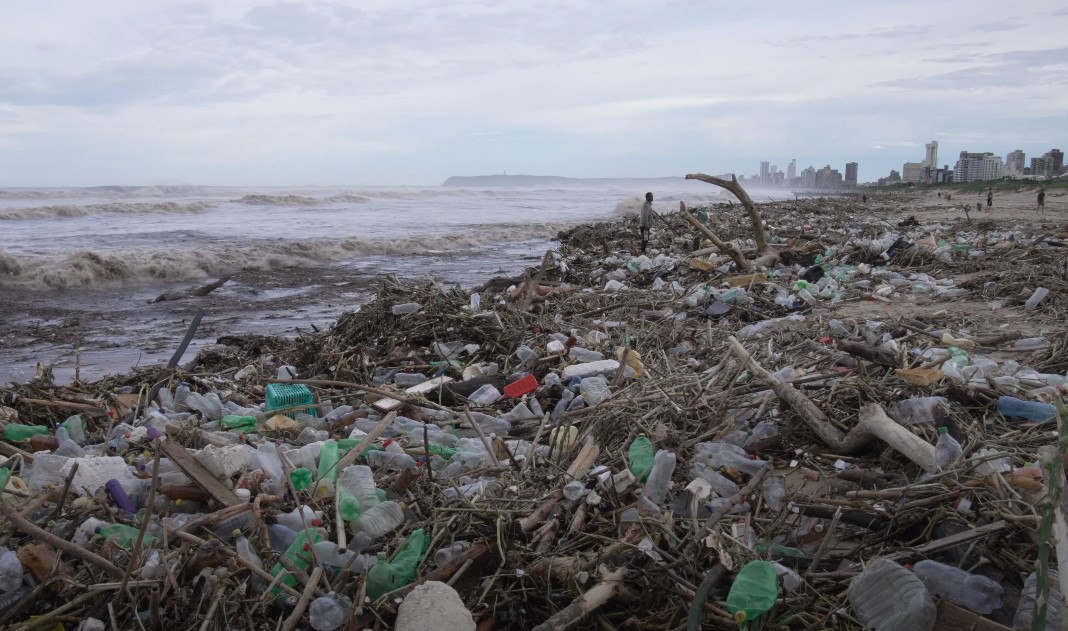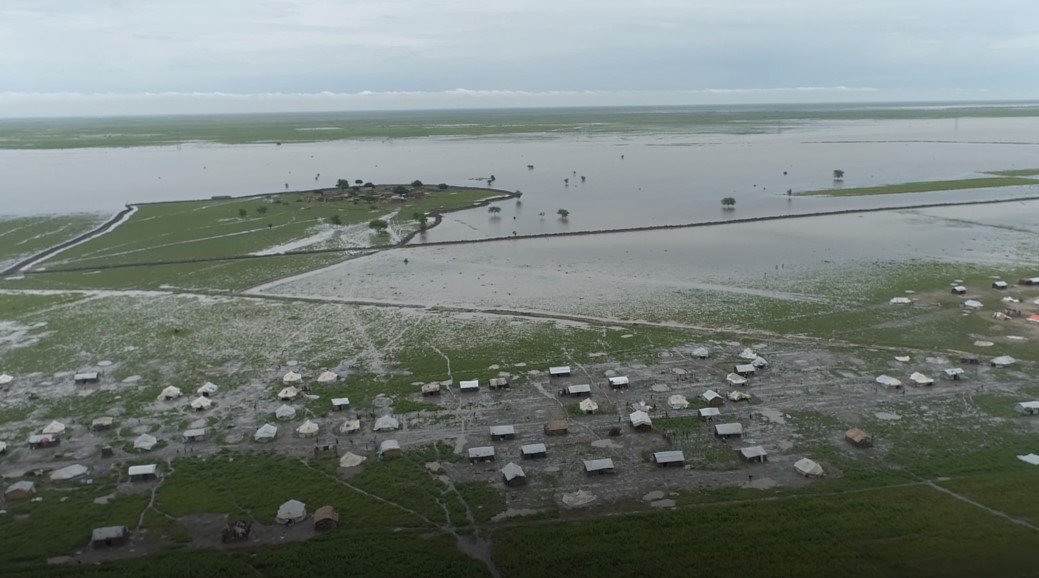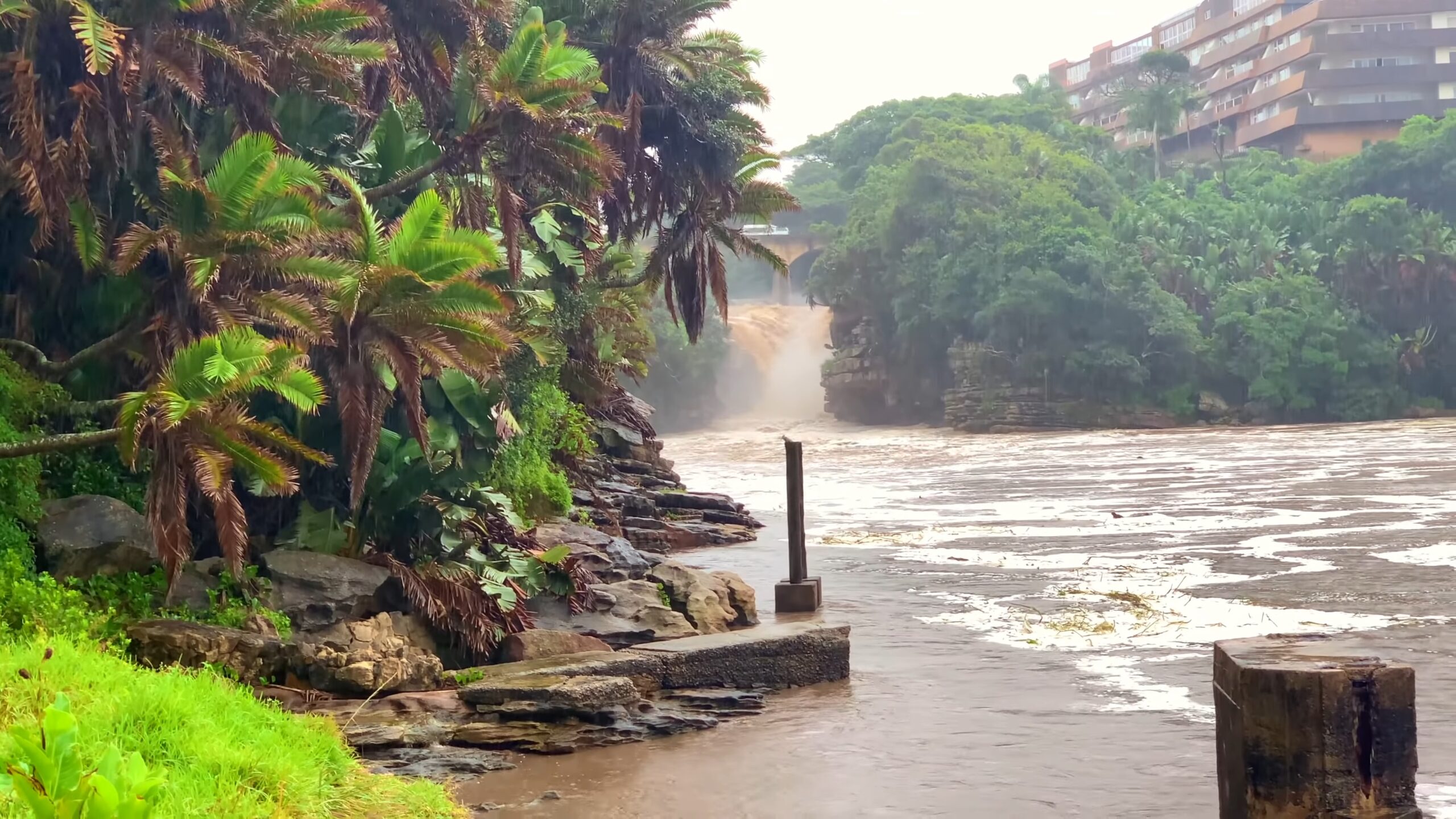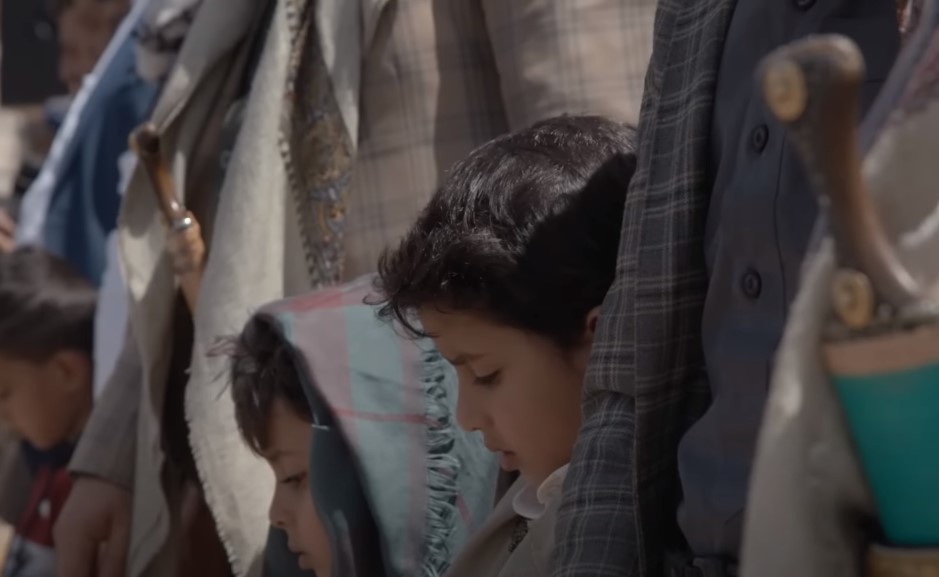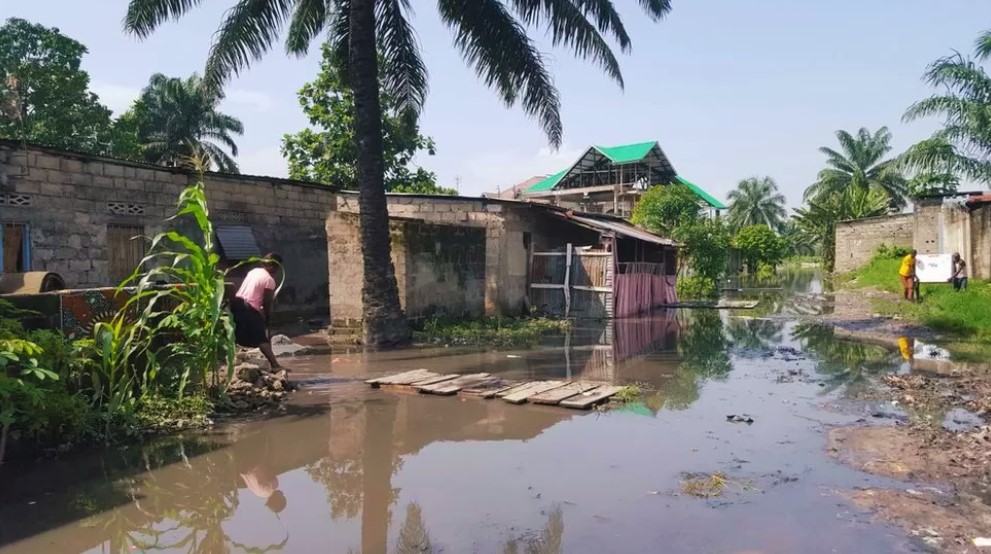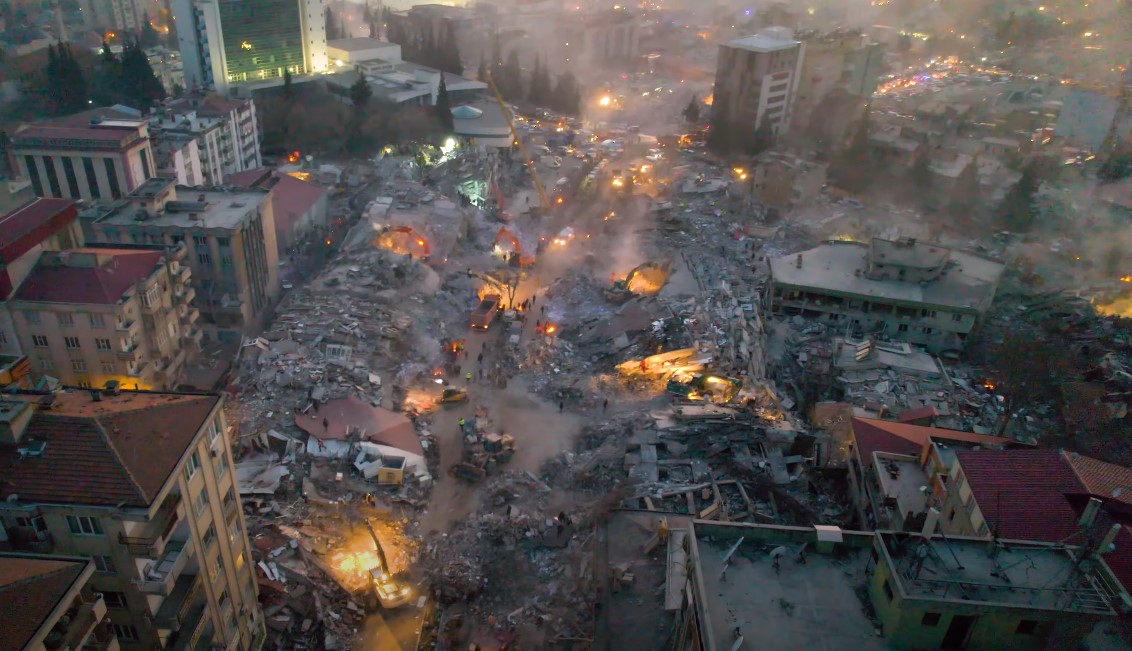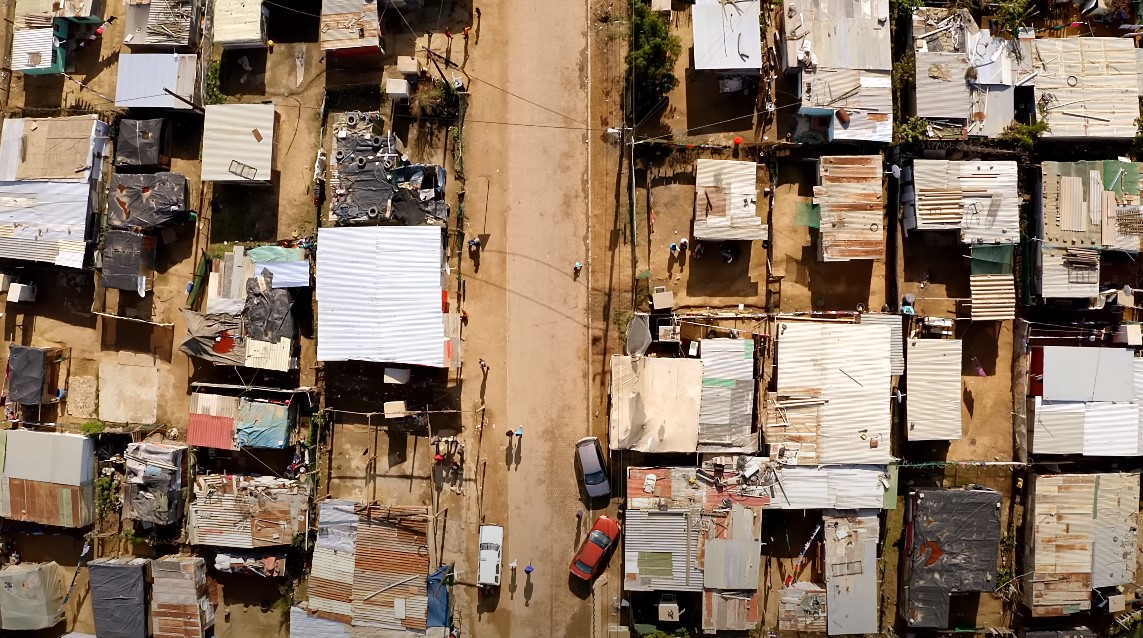As someone who is immersed in the study and response to climate change impacts, I’ve witnessed firsthand the escalating humanitarian crises fueled by this global challenge.
My experience in working with vulnerable communities has highlighted a critical, yet often overlooked, aspect: the disproportionate impact of climate change on countries that contribute least to greenhouse gas emissions.
From my vantage point, it’s clear that a fundamental shift in our approach to climate change is necessary. World leaders and policymakers must embrace a people-first strategy, one that transcends mere rhetoric and translates into tangible actions.
This involves prioritizing funding for climate resilience and adaptation, with a keen focus on anticipatory actions. Such measures are crucial in enhancing our understanding of climate change impacts at the community level, enabling us to respond more effectively and empathetically, United States are not exception, but here we will be more focused on outside countries.
In the following sections, we will get into the ten countries identified by researchers as being most vulnerable to climate disasters.
- Somalia
- Syria
- The Democratic Republic of the Congo
- Afghanistan
- Yemen
- Chad
- South Sudan
- Central African Republic
- Nigeria
- Ethiopia
- Climate change disproportionately affects countries with the least contribution to global CO2 emissions, highlighting a global inequality in the impacts of climate change.
- Vulnerable countries, often with low levels of climate readiness and high fragility, face severe challenges like food insecurity, natural disasters, and exacerbated conflicts due to climate change.
- Nations like Somalia, Syria, Yemen, and others are experiencing devastating effects of climate change, including droughts, floods, and agricultural disruptions.
- International support, both in terms of financial aid and knowledge transfer, is crucial for helping these vulnerable countries build resilience and adapt to climate change.
- The interconnectedness of global communities means that the impacts of climate change in one region can have far-reaching effects, underscoring the need for a collective global response.
- Individual actions, alongside national and international efforts, are essential in combating climate change and supporting the most affected regions.
How to Know What Countries Are at Risk of Climate Disaster?
As someone analyzing the risks of climate disasters, I’ve closely followed the work of the International Rescue Committee (IRC) and the World Resource Institute (WRI). Their research is crucial in identifying countries most vulnerable to climate crises. It’s a complex task, involving an assessment of both the likelihood of climate-related disasters and the capacity of these nations to respond and protect their communities.
In my studies, I’ve found that countries with low levels of climate readiness and high fragility are the most susceptible to climate disasters.
Climate readiness, in this context, is determined by evaluating the threats posed by climate change to a country and its ability to shield its citizens from, and build resilience against, these disasters.
On the other hand, fragility refers to the likelihood of a country’s governance and service delivery systems collapsing under stress.
The devastating effects of climate change are not a distant threat but a present reality. We’re witnessing more frequent and intense natural disasters and extreme weather events that are destroying livelihoods, exacerbating violent conflicts, and displacing populations.
Through my research and observations, I’ve compiled a list of 10 countries that are particularly vulnerable to climate change. Intriguingly, these nations have contributed minimally to the cause of climate change.
They account for merely 0.28% of global CO2 emissions, yet they represent 5.16% of the global population. This stark contrast highlights the disproportionate impact of climate change on different regions of the world.
Countries That Are On Edge
10. Ethiopia: Droughts and Decisions in a Land of Contrast
As someone who is closely monitoring the impacts of climate change, I have observed Ethiopia’s escalating struggle with recurring droughts and political instability. My recent visit to the region, coupled with ongoing studies, has painted a vivid picture of a nation grappling with severe environmental challenges.
Witnessing Their Unrelenting Drought
During my time in Ethiopia, the stark reality of its sixth consecutive failed rainy season was evident. The United Nations reports that this has affected over 24 million people, a figure that resonates deeply with the distress I witnessed in the rural communities. The parched landscapes and withered crops are a testament to the severity of the drought.
Navigating the Maze of Conflict and Aid Challenges
The complexities of Ethiopia’s political landscape have been a focal point of my research. The ongoing conflicts and political instability as it is marked as third-world country, as I’ve seen, significantly disrupt humanitarian support. This disruption hinders efforts to address the impacts of climate change effectively.
Furthermore, the war in Ukraine has had a ripple effect, exacerbating the food insecurity crisis in Ethiopia.
As Dr. Jane Goodall, a renowned primatologist and environmentalist, aptly puts it:
“Every aspect of our lives is affected by climate change – from the food we eat to the air we breathe.”
In my conversations with local leaders and international aid workers, a recurring theme is the urgent need for global cooperation in addressing these challenges.
The situation in Ethiopia is not just a local issue but a global one, reflecting the interconnectedness of our world.
As Professor James Hansen, a leading climate scientist, once stated
“The climate is a common good, belonging to all and meant for all.”
Ethiopia’s plight is a stark reminder of our shared responsibility in tackling climate change and its far-reaching impacts.
9. Nigeria: Floods, Farms, and Futures at Risk
When I Last visited Nigeria, Africa’s most populous nation, brought me face-to-face with the harsh realities of climate change.
The widespread flooding in 2022, which impacted 2.5 million people and devastated farmland and infrastructure, was a scene of profound disruption and loss.
The United Nations’ reports on this catastrophe only underscore the scale of devastation I witnessed.
Walking through the flooded fields, I saw the resilience yet vulnerability of the Nigerian people, struggling to salvage their livelihoods from the ravages of nature.
Observing the Escalating Food Insecurity Crisis
The situation in Nigeria is a stark reminder of the intricate link between climate change and food security.
The Food and Agriculture Organization of the United Nations predicts that by mid-2023, approximately 25 million Nigerians will be facing high levels of food insecurity.
This projection aligns with the growing sense of urgency I sensed among the communities and local authorities.
Political tensions and climate-induced disasters are converging to create a perfect storm of food scarcity.
As the environmental activist Wangari Maathai once said:
“We are called to assist the Earth to heal her wounds.”
In Nigeria, this call to action is more pressing than ever.
Remembering the Need for Global and Local Action
My experiences in Nigeria have reinforced the need for both global and local responses to climate challenges.
The country’s plight is not isolated; it is a microcosm of the larger global crisis we face.
As the renowned climate scientist Michael E. Mann suggests:
“There is a profound need for us to act collectively.”
Nigeria’s struggles with flooding and food insecurity are a clarion call for concerted efforts to address the root causes and impacts of climate change.
It’s a reminder that our actions, or inactions, have far-reaching consequences, echoing across continents and generations.
8. Central African Republic: Politics and Nature in Turmoil
My engagements in the Central African Republic (CAR) have been eye-opening, revealing a nation caught in the crossfire of political instability and environmental calamities.
The ongoing conflict over natural resources, which I’ve observed, has significantly weakened CAR’s ability to respond to climate disasters.
This turmoil isn’t just a political issue; it’s a humanitarian one. The struggle for control over resources has direct implications on the environment and the people’s well-being.
As environmentalist David Attenborough wisely stated:
“The truth is: the natural world is changing. And we are totally dependent on that world. It provides our food, water and air. It is the most precious thing we have and we need to defend it.”
Witnessing the Dire Consequences of Flooding
During my time in the CAR, the severe flooding and its aftermath were starkly evident. The camps for internally displaced people, already struggling with limited resources, were severely impacted.
The World Health Organization’s concerns about the spread of water-borne diseases like cholera are not unfounded. I’ve seen how these health risks are exacerbated in the wake of flooding, posing a significant threat to the already vulnerable populations.
The situation in CAR is a grim reminder of what Dr. Gro Harlem Brundtland, former Director-General of the World Health Organization, emphasized:
“For each of us, our health, and the health of our children and grandchildren, is the most precious of gifts.”
Need for Integrated Solutions
My experiences in the Central African Republic have underscored the need for integrated solutions that address both political stability and environmental resilience.
The challenges faced by CAR are not unique but are indicative of a larger global pattern where environmental degradation and political strife are intertwined.
As the Nobel laureate Wangari Maathai once said:
“We cannot tire or give up. We owe it to the present and future generations of all species to rise up and walk!”
This call to action resonates deeply with me, highlighting the urgency of addressing the intertwined challenges of political instability and environmental threats in CAR and beyond.
7. South Sudan: Navigating Floods in a Fragile Nation
In South Sudan , the world’s youngest nation, I’ve witnessed the deep scars left by ongoing conflicts, even after the official end of the civil war in 2018.
These conflicts, as the World Bank points out, severely limit the country’s capacity to tackle climate issues. Walking through the communities, I saw how the instability has disrupted not just lives but also the environment.
The resilience of the South Sudanese people is remarkable, yet the challenges they face are immense.
As Kofi Annan, the former UN Secretary-General, once said:
“Peace is not just the absence of conflict. Peace is the creation of an environment where all can flourish.”
This statement resonates profoundly with the situation in South Sudan, where peace is essential for both societal and environmental stability.
Witnessing the Devastation of Floods and Food Insecurity
The severity of the climate crisis in South Sudan became palpable to me when I encountered the aftermath of the severe floods that affected over 900,000 people in 2022, as reported by Flood List.
The floods have not only destroyed homes but also decimated crops, exacerbating food insecurity and displacement. Seeing the flood-affected areas, the scale of the disaster was overwhelming.
It brought to mind the words of Rachel Carson, the renowned environmentalist, who warned:
“The more clearly we can focus our attention on the wonders and realities of the universe about us, the less taste we shall have for destruction.”
In South Sudan, the need for focused attention on both conflict resolution and climate adaptation has never been more urgent.
The intertwined nature of these challenges calls for a holistic approach, one that addresses the root causes of conflict and environmental degradation alike.
6. Chad: Facing the Floods Against All Odds
The stark reality of its position at the apex of the Notre Dame-Global Adaptation Initiative Index for climate vulnerability was unmistakable.
This index, which assesses a nation’s exposure, sensitivity, and adaptability to climate change, paints a sobering picture of Chad’s environmental challenges.
My observations in the field aligned with these findings, revealing a landscape and a people under severe environmental stress.
The words of Wangari Maathai, the Nobel Peace Prize laureate and environmentalist, echo in my mind:
“We are called to assist the Earth to heal her wounds.”
In Chad, this call to action is urgent and palpable, as the country grapples with its extreme vulnerability to climate change, while also being one of the most corrupt countries in the World.
Witnessing the Impact of Flooding and Food Insecurity
The extent of Chad’s struggle with climate change became even more evident when I encountered the aftermath of the 2022 floods, which, as reported by the UN News, affected over a million people.
The devastation wrought by these floods was not just physical but also deeply impacted the food security of the nation. The sight of flooded fields and communities struggling to cope was a stark reminder of the interconnectedness of climate change, food security, and human well-being.
As the environmental activist and author Bill McKibben notes:
“Climate change is no longer a distant threat, but a visible reality.”
In Chad, this reality is a daily challenge, where the fight against flooding and food insecurity is a fight for survival.
The resilience of the Chadian people in the face of these adversities is both inspiring and a call to action for the global community to support and empower those most vulnerable to climate change.
5. Yemen: In the Shadow of Conflict and Climate
The harsh realities of a nation torn by conflict and exacerbated by climate change were palpable making them one of the poorest in Asia.
The United Nations’ estimation that over 17 million Yemenis require food assistance is more than just a statistic; it’s a reflection of the countless stories of struggle and resilience I encountered.
The conflict has plunged millions into poverty, with climate change further intensifying the nation’s agricultural challenges according to Oxfam America.
Witnessing the desperation in the eyes of families unable to secure their next meal was heart-wrenching.
As the environmental advocate, David Suzuki, aptly puts it:
“We’re in a giant car heading towards a brick wall and everyone’s arguing over where they’re going to sit.”
In Yemen, the urgency to address both conflict and climate change is not just about seating arrangements; it’s about survival.
Observing Desertification and Drought in Yemen
The environmental degradation in Yemen, particularly the acceleration of desertification and worsening water scarcity, is a crisis I observed firsthand.
The once fertile lands turning barren and the dwindling water sources are not just environmental issues, but catalysts for further conflict and suffering.
I can attest that Yemen’s situation is a stark example of how climate change can exacerbate existing geopolitical and social tensions.
The words of the renowned environmentalist, Rachel Carson, resonate deeply in this context:
“Man’s war against nature is inevitably a war against himself.”
Yemen’s battle with desertification and drought is a clear manifestation of this war, where the consequences of environmental neglect are as tangible as they are tragic according to Relief Web.
The need for immediate and concerted action to address these challenges is critical, not only for Yemen but for the global community that shares this planet.
4. Afghanistan: Where Drought Meets Despair
The stark reality of a nation grappling with the aftermath of the Taliban takeover was evident as stated by EU.
The World Food Programme’s report that over half of the Afghan population faces acute food insecurity resonated with what I saw on the ground.
The interplay of conflict, economic decline, and climate change has created a dire situation. Walking through the streets of Kabul, I met families who had lost everything, not just to war but also to the unrelenting forces of nature.
Their stories are a powerful reminder of the words of environmental activist Wangari Maathai:
“We cannot tire or give up. We owe it to the present and future generations of all species to rise up and walk!”
Experiencing Afghanistan’s Drought and Flooding
Afghanistan’s worst drought in nearly three decades, coupled with severe flooding in other parts, is a crisis I witnessed firsthand.
The impact on food production and the resulting widespread displacement are not just numbers in a report; they are realities that affect millions.
In rural areas, I saw fields that once flourished now barren, and in other regions, homes destroyed by floods. This extreme weather is a clear indication of the urgent need for climate action
As the environmentalist John Muir once said:
“When we try to pick out anything by itself, we find it hitched to everything else in the Universe.”
Afghanistan’s climate crisis is a stark example of this interconnectedness, demanding a global response that addresses both the immediate needs and the underlying causes.
3. The Democratic Republic of the Congo: Rich Land, Rising Waters
In the Democratic Republic of the Congo (DRC), the stark contrast between its natural riches and the environmental and humanitarian crises is palpable.
The ongoing conflicts, have not only displaced millions but also severely disrupted efforts to combat climate change.
Witnessing the displacement camps and the struggles of communities to adapt to the changing environment, I am reminded of the words of environmentalist David Attenborough:
“The truth is: the natural world is changing. And we are totally dependent on that world. It provides our food, water and air. It is the most precious thing we have and we need to defend it.”
Observing Natural Disasters
During my visit to South Kivu in May 2024, I witnessed the aftermath of the torrential rains that caused devastating floods, affecting over 15,000 people and claiming hundreds of lives.
The frequency and intensity of these natural disasters in the DRC are alarming as stated by Relief Web. Seeing the destruction first-hand, the urgency of addressing climate change and its impacts becomes even more evident.
It’s a situation that echoes the sentiments of climate activist Greta Thunberg:
“Our house is on fire.”
In the DRC, this is not a metaphor but a daily reality for many, where the combination of natural disasters and conflict creates a relentless cycle of suffering and environmental degradation.
2. Syria: Amidst War, Battling Climate’s Fury
Syria, the impact of its prolonged conflict on climate resilience is starkly evident. The war has not only caused immense human suffering but has also eroded the nation’s ability to cope with environmental challenges.
The ABC News report that over 90% of Syrians now live below the poverty line is a statistic that becomes heartbreakingly real when you see the day-to-day struggles of the people there. This dire economic situation severely limits their resources for climate adaptation, making them increasingly vulnerable to environmental changes.
As environmental advocate Wangari Maathai once said:
“It’s the little things citizens do. That’s what will make the difference. My little thing is planting trees.”
In Syria, the ‘little things’ like planting trees or building resilience against climate change are overshadowed by the overwhelming needs for basic survival.
Effects of Droughts and Natural Disasters
In February 2024, the devastating aftermath of the earthquake affected hundreds of thousands, as reported by the Disaster Philantrophy.
This natural disaster, on top of the severe droughts the country faces, compounds Syria’s struggles.
The resilience of the Syrian people, despite these overwhelming challenges, is both inspiring and a call to action. It reminds me of the words of Kofi Annan:
“We may have different religions, different languages, different colored skin, but we all belong to one human race.”
The crisis in Syria is a stark reminder of our shared humanity and the urgent need for global cooperation in addressing the intertwined challenges of conflict and climate change.
1. Somalia: Weathering the Storms of Climate and Conflict
In Somalia, the harsh impact of persistent droughts was unmistakably clear. The landscape, parched and barren, told a story of prolonged suffering and resilience.
The United Nations reports that over 2.6 million people are internally displaced, many due to these environmental factors. Seeing families uprooted, their livelihoods destroyed by the unyielding drought, was a profound reminder of the human cost of climate change.
It brought to mind the words of environmentalist David Attenborough, who said:
“The truth is: the natural world is changing. And we are totally dependent on that world. It provides our food, water and air. It is the most precious thing we have and we need to defend it.”
In Somalia, defending the natural world is not just about conservation; it’s about survival.
Devastation of Flash Floods in Somalia
Contrasting the droughts, my experience with the flash floods in Somalia was equally jarring. In 2024 alone, these floods affected over 460,000 people.
Witnessing the aftermath of these floods, the displaced families, and the destroyed homes, was a stark illustration of the extreme weather patterns that climate change is intensifying. It’s a vivid example of the urgent need for climate action.
As Christiana Figueres, an architect of the Paris Climate Agreement, aptly put it:
“Climate change is the most pressing issue of our time, and we are at a defining moment.”
Somalia’s plight is a call to the world to recognize and act on this defining moment, to mitigate the impacts of climate change and to support those who are most vulnerable to its effects.
FAQ
What factors contribute to a country’s vulnerability to climate change?
A country’s vulnerability to climate change is influenced by its geographical location, economic status, political stability, and capacity for climate adaptation and mitigation. Countries with limited resources and ongoing conflicts are particularly susceptible.
How does climate change exacerbate existing conflicts?
Climate change can intensify existing conflicts by exacerbating resource scarcity, such as water and arable land, leading to competition and tension among communities and nations.
Can developed countries assist vulnerable nations in combating climate change?
Yes, developed countries can provide financial, technological, and knowledge-based support to help vulnerable nations build resilience against climate change and adapt to its impacts.
What role do international organizations play in addressing climate change in vulnerable countries?
International organizations play a crucial role in coordinating global efforts, providing humanitarian aid, conducting research, and advocating for policies that support climate resilience in vulnerable countries.
How does climate change affect food security?
Climate change impacts agricultural productivity through extreme weather events, changing rainfall patterns, and increasing temperatures, leading to food shortages and heightened food insecurity.
What is the significance of global CO2 emissions in relation to vulnerable countries?
Vulnerable countries often contribute the least to global CO2 emissions but bear the brunt of climate change impacts, highlighting the need for global responsibility and equitable climate action.
Can individual actions make a difference in combating climate change?
Individual actions, such as reducing carbon footprints, supporting sustainable practices, and advocating for climate policies, collectively contribute to global efforts against climate change.
Final Words
In conclusion, the experiences and observations shared in this text underscore the urgent need for a global response to climate change, particularly in supporting the most vulnerable countries.
These nations, despite contributing minimally to global CO2 emissions, face the harshest impacts of climate change, including extreme weather events, food insecurity, and heightened conflict risks.
The stories from countries like Somalia, Syria, and Yemen vividly illustrate the human cost of climate inaction.
It’s clear that developed nations and international organizations must play a pivotal role in providing support to these vulnerable regions.
This support should not only be financial but also involve sharing technology and expertise to build resilience and adapt to the changing climate.
Moreover, addressing the root causes of climate change requires a concerted global effort, where every individual’s actions matter.
Discalimer
Please note that the content provided here is based on personal opinions, expertise, and experiences, as well as information gathered from various online sources. It reflects an individual perspective and should be considered as a subjective interpretation of life. This narrative aims to share personal insights and experiences to offer a unique view of the city, rather than an exhaustive or universally applicable guide.

